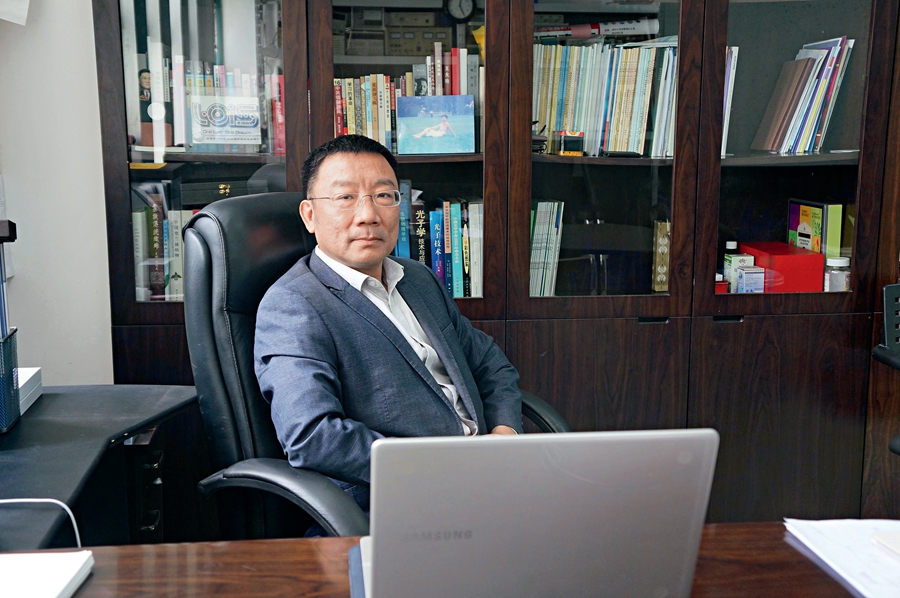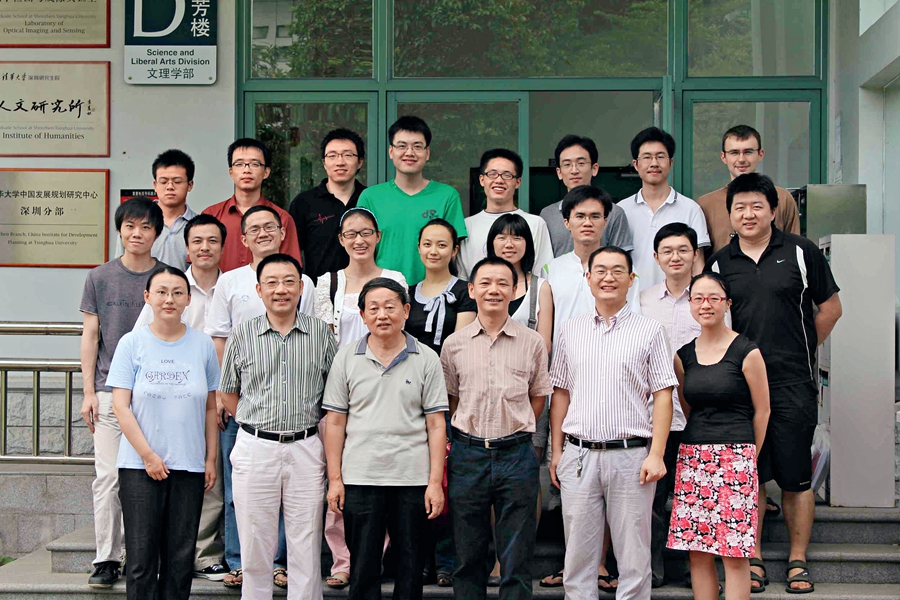By special correspondent HUANG YUANJUN
ON July 21, 2017, the famous academic journal Physical Review Letters published a paper by a research team led by Professor Ma Hui from Tsinghua University, indicating the great achievements made in polarized light scattering.
Polarized light may sound new to many people. Actually, it has already been put into use. For example, the liquid crystal display (LCD) of electronic watches, 3D movies, and glare-reducing polarized sunglasses, to name just a few.
In addition, polarization techniques are potentially powerful tools for the early diagnosis of cancer, identification of marine algae and plankton, and classification and tracing of gas particles in air pollutants.
An Eye-opening Discovery
When we put on a pair of 3D glasses when watching movies, the stereoscopic images will instantly pop up. By far, this may be the most widely known application of polarized light.
Professor Ma Hui in his office.
According to Professor Ma Hui, polarization is a major feature of light. People live in a world full of polarized light but are unaware of it. The study of polarized light enables people to understand the world from a new perspective. “Just as telescopes and microscopes assist people in exploring the universe and the microscopic world, this technique helps people obtain information using optical methods. For instance, a camera with a polarization sensor can help detect cancer cells, which is a huge technological breakthrough for early cancer detection,” he said.
Fundamental research is the source of innovation. The breakthroughs made by Ma Hui and his team in polarized light can be attributed to a new theoretical algorithm and relevant calculation model they developed. “The calculation speed and capacity of our new algorithm are very remarkable,” Ma Hui said. Almost all the subsequent breakthroughs by his team are based on this algorithm.
Application in Three Major Fields
Firstly, the polarization technique can be applied to optical detection and imaging in biomedicine. “In biomedical diagnosis and treatment, optical imaging within living organism is very difficult due to light scattering and opaque biological tissues. Knowing this, the most direct way to improve imaging is to avoid light scattering.” According to Ma Hui, a polarization technique can reduce the negative effect of scattering. This technique, once applied, will improve the imaging resolution of epidermal tissue and help doctors detect cancerous tissues; on the other hand, it can help people acquire more information about the sample microstructure, detect abnormalities of biological tissues, and make pathological diagnosis possible. Moreover, as a non-destructive detection method for organisms, it is safe, timely, and effective.
Professor Ma and his R&D team in Guangdong Province.
At present, Ma Hui and his team have achieved satisfactory imaging in lesion location by using this polarization technique. In addition, compared with traditional time-consuming dyed pathological section, real-time diagnosis can be displayed online direct from the operating table. By measuring the cancerous tissues together with the hospital, the team members have obtained a crucial scientific basis to prove that full polarization imaging is indeed likely to be used for the quantitative representation of cancerous tissues. In 2015, with the support of the national major scientific instrument development program, they researched and developed the full polarization imaging microscope, pushing for industrialized application.
Secondly, this polarization technique can be applied to marine detection. As the attenuation and scattering of light are much stronger in seawater than in the atmosphere, visibility in water is much worse, making marine detection quite inconvenient. In recent years, with the support of major scientific research programs in China, a new oceanographic instrument was developed. Thanks to the polarization technique, the visibility and imaging of marine detection was improved and typical algae differentiated.
The new oceanographic instrument can be used for algae or sea particles detection, red tide warning alerts, and ecological environmental monitoring. For instance, scientists have various conjectures about global warming. “Algae have a great effect on environmental changes, scientists can figure out the cause of global warming by monitoring various types of algae and measuring algae concentration in different waters,” said Ma Hui.
Thirdly, polarization technology can be applied to air pollution control. Over the past couple of years, by cooperating with enterprises and top institutions of environmental monitoring, Ma Hui and his team are committed to developing an instrument to count, classify, and source analyze Particulate Matter (PM) in the air.
According to Ma Hui, people used to evaluate air quality by measuring the PM such as PM2.5 and PM10. However, his team aims to tell people what these PMs are, where they come from, and how they change with time. “By adopting physical methods, besides traditional meteorological observation and chemical analysis, we can build a database on physical science,” commented Ma Hui. “By having a speed advantage over the optical method, a rapid evaluation system for air pollution can also be built.”
Until now, few people have carried out polarization research and there are few applications. The research findings by Ma Hui and his team still need time to be used in industries, but the concrete progress has so far convinced people that their polarization technique has broad application prospects for a variety of areas.
Interdisciplinary Academic Team
The Graduate School at Shenzhen, Tsinghua University has two distinctive features. One is industrial cooperation, and the other is the cross-disciplinary composition.
“The two features are interconnected with each other,” Ma Hui said. The commercialization of research findings is a process that includes stages such as fundamental research, applied research, technological development, engineering and industrialization. Each stage has different operation rules, bottlenecks that impede synergy innovation, and factor allocation barriers. An interdisciplinary team can help link this “innovation chain” and promote the application of research findings.
Ma Hui and his team have always attached great importance to the application of their research findings. The team members are teachers and students majoring in physics, electronics, medicine, chemistry, and materials. They can share their ideas and strengths and hope to apply their findings to the fields of biomedicine, marine detection, and air pollution, and others.

